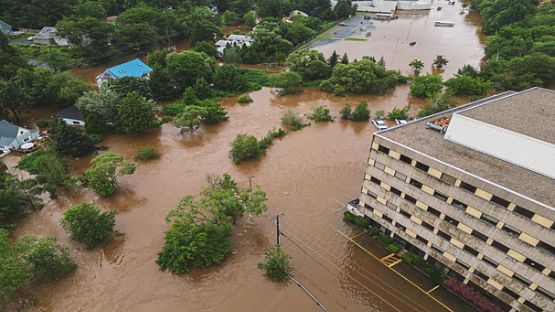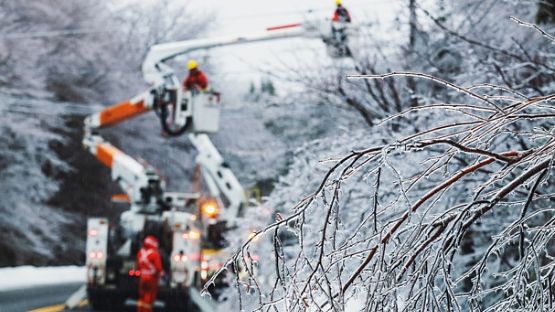If you’re a building owner or manager, you undoubtedly consider the safety of the people and property within it. You may have a facilities management safety or workplace health and safety policy that you use to help minimize the effects of any risks that arise.
But what about when contractors are working in or around the building? Are the same safety precautions applied for each of the contractors?
Whether you hire a contractor for a day or on an ongoing basis, it’s important to set a mutual understanding of risks and the protections they can take to ensure a safe environment for everyone. Contractors may introduce additional hazards, so it’s critical to cover any contingency in your contractor safety procedure.
In this article, we’ll offer advice on adequately vetting contractors before you hire and provide a comprehensive resource to help you create your own contractor management policy.
Who is a contractor?
A contractor could be an individual or a company that employs individuals who work in or around your building to maintain or improve it. Examples of contractors include:
- Electricians
- Welders
- Plumbers
- HVAC specialists
- Landscapers
- Roofers
- Snow removal workers
When it comes to safety, there will be different considerations based on the type of work each contractor does – and the materials they use. This is why it is important to set safety plans and compliance processes in place that cover the different types of work and materials contractors use.
What to look for in a contractor
There are many ways to find the right contractor for a job, including an internet search, professional associations related to the type of skilled work you need done and referrals. Once you’ve found a few contractor options, it’s important to ensure each company or candidate has:
- Current professional certifications, licences and permits
- Registration with the Workplace Safety and Insurance Board (WSIB)
- Certificate of insurance, with a limit that would cover any potential losses (typically $1 million to $10 million
- References you can call
Once you’ve chosen the contractor, you’ll want to create a contract with a defined scope of work. If it includes regular maintenance or ongoing work, you may choose to have a lawyer review the contract to ensure it covers everything you need to protect your company.
If you’ve worked with a trusted vendor regularly and over the long term without a contract, you may consider getting additional insured status. You can speak to your broker about this safety management procedure.
What do you need in a contractor management policy?
The scope of your contractor management policy will vary depending on the size of your building, the type of work for which you hire a contractor and other factors. For some jobs, such as snow removal, it may be a very simple workplace safety plan. For more complex projects that may include higher exposures, such as hot work, you’ll need to consider additional safety measures.
Here’s an overview of the elements to consider when creating a comprehensive contractor management policy:
Pre-work site survey
Before a contractor begins work in or around your building, take the time to review your existing health and safety policy. Walk through the worksite with them and identify potential hazards to be considered. Be sure to ask the contractors if they anticipate any risks that they may bring into the building – and discuss how to prevent a safety problem. For example, if they are undertaking hot work, it’s especially critical to ensure a strict adherence to hot work policy and safety procedures; this is the cause of many losses in buildings.
Contractor sign offs on existing health and safety policies
If your building is a workplace, you may have other policies, such as no smoking, wearing proper PPE, lockout and tagout procedures, etc. Take the time to share these policies with every member of the contractor’s team to ensure they understand and agree to comply with the regulations you have in place. Be sure that all contractors – including people who may be on-site for only part of a day – sign off on all policies and procedures.
It’s also important to communicate the safety procedure for reporting an incident or accident around the property.
Ongoing health and safety
Whether you manage health and safety on your own or you have a joint health and safety team, it’s important to regularly survey the building/worksite to ensure things like fire extinguishers are in place, there are no slip, trip and fall hazards and fire doors remain closed. It’s helpful to have a checklist so you know what to look for each time you do a survey.
Orientation training
If you manage a larger building or worksite or you’re hiring multiple people for multiple jobs around the property, it can be efficient to train everyone on health and safety and other regulations at one time.
Larger building owners may also require contractors to wear identification (badges, jackets, vests, etc.) so that employees and management can easily identify them.
Daily/weekly health and safety meetings
If your contractor has several people on the site, it can be helpful to hold a toolbox meeting at the start of each day to discuss any previous or potential hazards or behaviours that could lead to a safety incident. The lead contractor or a member of your team may lead each meeting, depending on the type of work that’s being conducted.
Risk manager to develop, maintain and oversee contractor management policy
In an ideal world, you would have one staff member assigned to every contractor who does work on-site to ensure absolute safety and complete adherence to policies. However, most building owners and managers don’t have the personnel to do this. Do your best to assign employees to keep an eye on contractors, support their needs and activities so that they adhere to company policy. This is especially important if a contractor brings on sub-contractors – who should also review and sign off on all building policies and procedures.
It’s helpful to have one person on-site in charge of the contractor management policy. This should be the person who does initial walk-throughs, conducts training and supervises contractors on an ongoing basis. With regular communication and observation, they will be able to spot the need for any new components to the policy.
Up-to-date policies
A contractor management policy should be considered a living document that needs to be reviewed and updated periodically to ensure it’s appropriate for all the work that is done around the building.
The process of creating a contractor management policy may seem overwhelming at first, but once it’s in place, it is typically simple to follow. It’s much easier to have policies for contractors in writing rather than trying to verbally explain everything.
Need more information on contractor management policies?
Talk to your insurance broker or Aviva’s Risk Management Solutions team at arms.canada@aviva.com.













